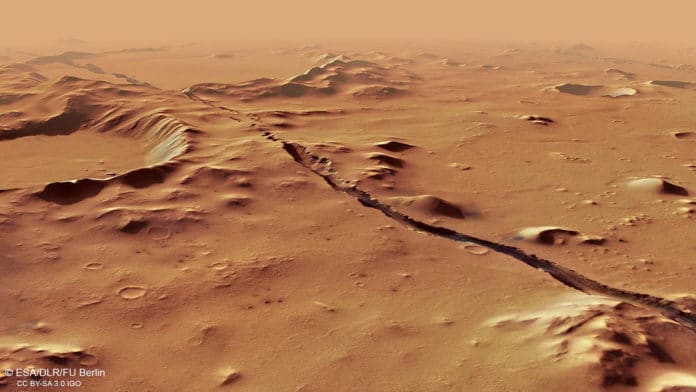The study of marsquakes could offer detailed insights into Mars’ mantle and core. Unlike Earth, the red planet doesn’t have tectonic plates, but volcanically active regions can cause quakes.
NASA‘s InSight lander has recently detected two strong, clear quakes with magnetude 3.3 and 3.1 on Mars. Their location is Cerberus Fossae, a steep-sided set of troughs cutting volcanic plains to the east of Elysium Mons.
One quake was more ‘Moon-like,’ whereas the other quake was more ‘Earth-Like.’ Previously InSight had detected two quakes of magnitude 3.6 and 3.5 on the exact location.
InSight has recorded over 500 quakes to date, but because of their clear signals, these are four of the best quake records for probing the interior of the planet.
Taichi Kawamura of France’s Institut de Physique du Globe de Paris helped provide InSight’s seismometer and distributed its data and the Swiss research university ETH Zurich. Kawamura explained, “Earthquake waves travel more directly through the planet, while those of moonquakes tend to be very scattered; marsquakes fall somewhere in between. Interestingly, all four of these larger quakes, which come from Cerberus Fossae, are ‘Earth-like.'”
John Clinton, a seismologist who leads InSight’s Marsquake Service at ETH Zurich, said, “It’s wonderful to once again observe marsquakes after a long period of recording wind noise. One Martian year on, we are now much faster at characterizing seismic activity on the Red Planet.”
